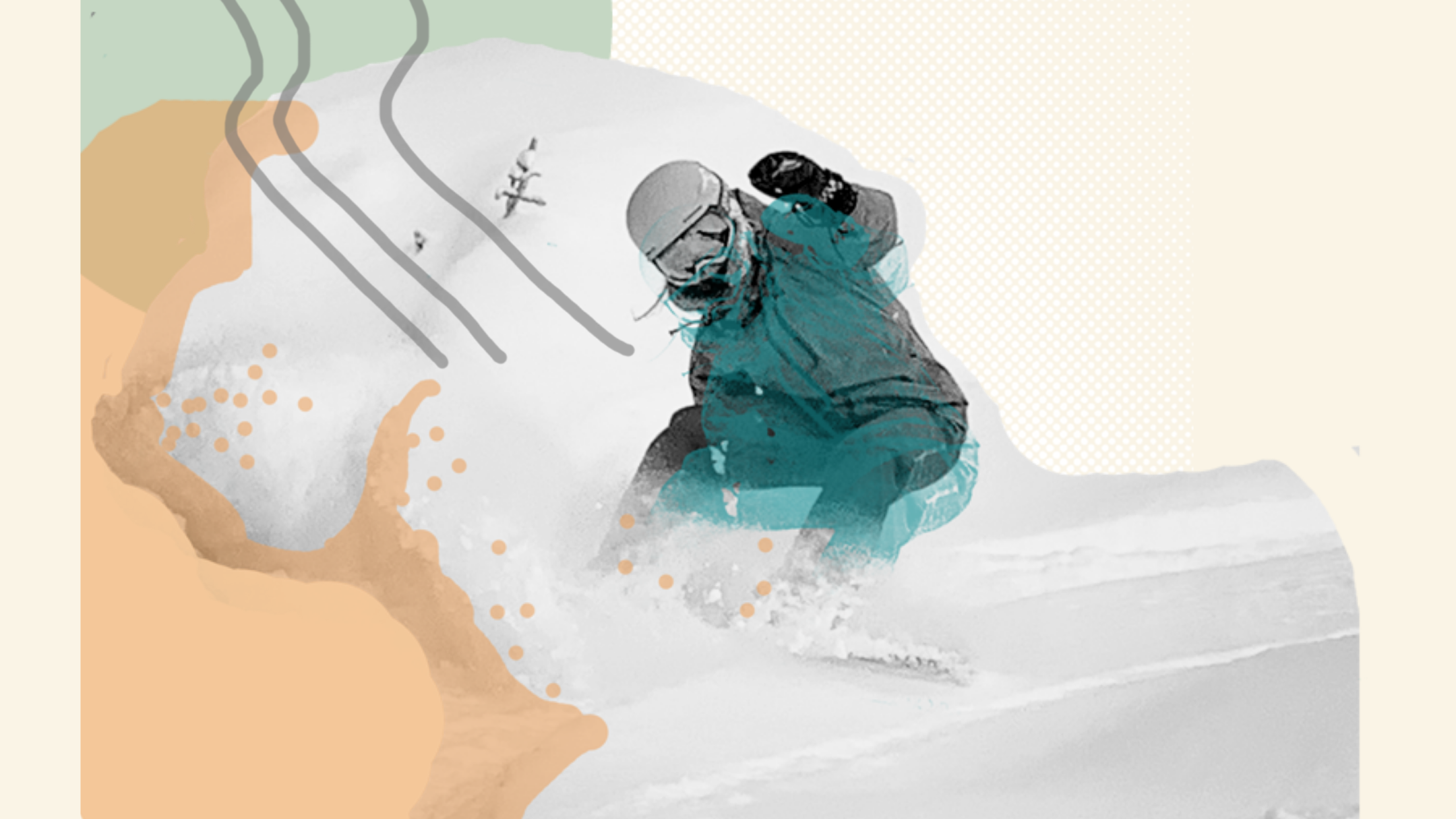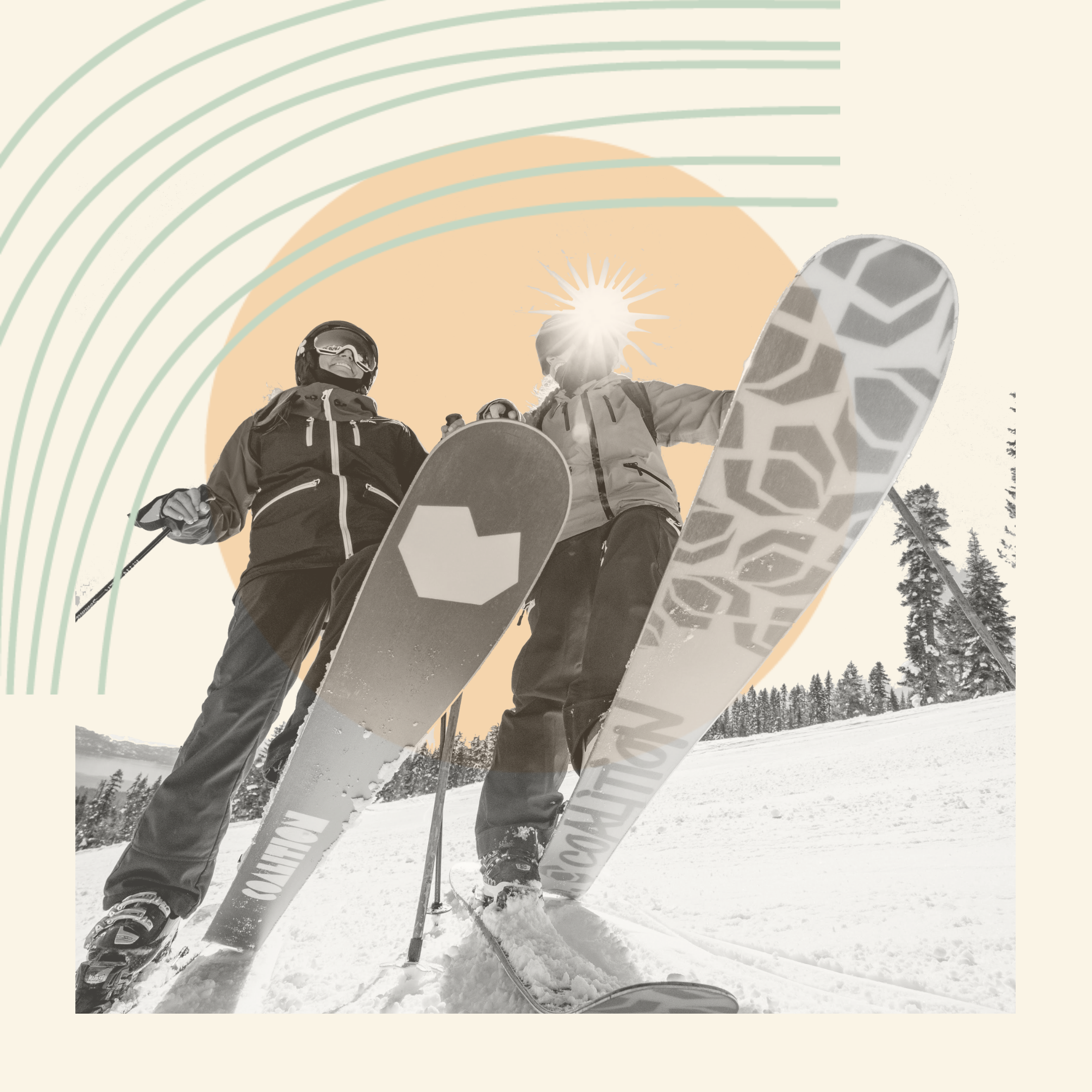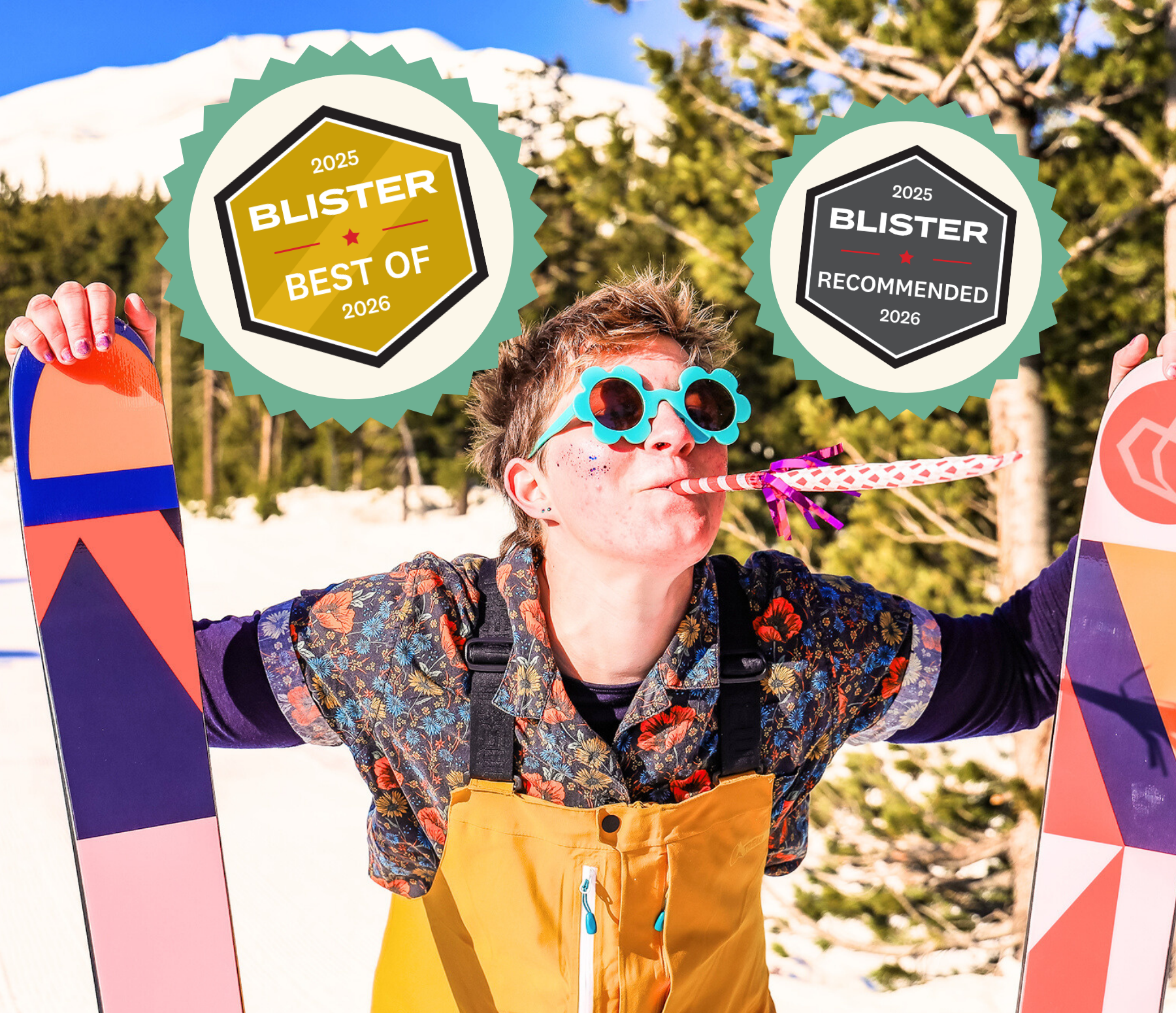As we get closer to the start of snowboard season, there are some things to think about before we can enjoy the winter ride. One being snowboard bindings. You might be asking yourself, where do I mount my snowboard bindings? We're going to try to help you answer that question.
We all have a natural stance that allows us to maneuver the board to our liking and our body type, but it can take some time to find exactly where that is. To help you find that sweet spot, we have broken down the confusing world of binding placement into four main adjustment categories: stance direction, stance width, stance angles, and lateral binding placement.
Stance Direction:
When riding, there are two options for stance direction: goofy or regular. Goofy is when you predominantly lead with your right foot forward. Regular is for those who ride with their left foot forward the majority of the time. Although most people have a preferred riding direction, you can always ride “switch” or the opposite direction of your dominant stance. With riding switch, there are different angles that will make switch easier than others, but we will go farther in-depth on that in the Stance Angles section.
In order to tell whether you are goofy or regular, there are a few “tests” you can do. Your dominant foot in snowboarding is typically your back foot, as that is what provides you with steering and control. Your front foot provides balance and direction, so typically, this will be your less dominant foot. When trying to decide whether you ride goofy or regular, it’s important to think about everyday actions, such as walking up the stairs. Which foot do you tend to lead with? Which foot do you kick a soccer ball with? The answer to these “tests” will likely be your back foot, meaning these methods will help to identify which foot should lead, and which should go back.
Stance Width:
Since we have determined which foot you will be leading with, we can now move on to stance width. The stance width refers to how far apart your feet will be from each other. This width will be critical to the amount of control you will have over your board. Most snowboards come equipped with a reference stance. This is the width that the board's technical aspects are built around. Riding at reference stance is not critical, as that may not be the perfect fit for you. A great starting width is slightly wider than shoulder-width apart. If you are aware of your riding style, then you may go wider, or narrower, based on riding style. More technical riders and park riders tend to prefer a wider width to help with balance on jumps and jibs, and increased stability when bombing the steeps at high speeds. Those who enjoy a more surf-like style, or hard carving will prefer a slightly narrower stance to help engage the edges and have quick transitions between them.
For those folks whose biological sex is female, you likely have a harsher Q angle than those whose biological sex is male. A Q angle is the quadricep angle. This is the angle at which the quadricep meets the knee cap in comparison to the line formed by the ligament attaching to the kneecap and shin (Gorman). Why does this matter? Females tend to have a Q angle between 12-19 degrees, whereas males between 8-15 degrees. This difference in Q angles is crucial in deciding what width to use. Typically, people will choose a stance that reflects their width while walking, but the harsher Q angle you have, the wider you will want your stance to help engage the inner thighs and take the strain off of the big toe section of your foot.
In order to ensure your stand width stays consistent, you can measure the distance from the center of each binding. That distance, in inches or centimeters, will be your stance width. Write it down, and keep it somewhere safe so you can always refer back to it before mounting a new pair of bindings, or swapping boards!
Here’s a chart that compares rider height to suggested widths.
Stance Angles:
Your riding angles are just as important to turning intuition, stability, and balance as your stance width. These angles are what help to provide direction and overall board movement. These angles will alter how hips and knees align depending on what direction your feet are turned towards. It is safe to say the majority of riders will want their front foot turned slightly outwards toward the nose of the board. The base plate of your bindings will have numbers ranging from 0-30 in both the positive and negative directions. These numbers are to help guide you towards the perfect angle combination.
Our Q-Angles again play a huge role in determining stance angles. As with stance width, people tend to set up their stance angles similar to how they walk. This means very minimal angles, such as 0°/0°. This causes most of the weight to be concentrated directly between the feet, and not evenly distributed beneath the feet. If you notice you tend to struggle with balance and are currently riding minimal angles, try adjusting them outward to 12°/12° angles, also referred to as a “duck” stance rather than a “neutral” or “pigeon” stance. This will help to align the hips, knees, and ankles over themselves, creating a “cowboy” stance (having the knees rotated outward) instead of having weight positioned on the big toe portion of the foot, and the knee leaning inward.
Adjusting angles is a much more long-term solution than encouraging riders to force a “cowboy” stance by pushing the knees outward. By adjusting the angles, riders can begin to engage the inside thigh muscles and help keep the quadricep muscles from fatiguing as quickly, increasing rider stamina.
Once you have determined a good angle for you, you can adjust your back foot angles to accommodate for varying riding styles. If you find yourself riding a lot of park where switch riding is a must, then a positive/negative stance may be helpful. This is the “duck” stance. Both feet are rotated slightly outward, creating for easy maneuverability riding regular and switch.
If you find yourself riding more technical terrain, a positive/positive (+/+) stance could be helpful. This is where both your feet are rotated towards the nose. The front foot will have a harsher angle than the back, but by having both feet angled towards the nose, the knees are in a better position to dive into nose side turns.
This “+/+” stance will make riding switch more difficult, but is great for more directionally shaped boards, such as the Sojourner Solid, as directional boards are not designed to be ridden switch. If you find yourself somewhere in the middle, a great option would be a positive/zero (+/0) stance. This is where your front foot is rotated towards the nose, and the back foot is perpendicular to the edge. This allows for strong front side carves, while still being able to ride switch without cross loading your knee. Cross loading is where you are putting pressure on one side of your knee while your foot is positioned to put pressure on the opposite side.
Lateral Binding Placement:
Once you know your width and angles, you can begin playing with the lateral placement of your binding on the board. It is most common to set your bindings in the middle of your board, giving you a centered balance on the board, however, that is not the only option you have. For those steep and deep pow days, a great tip is to set your bindings back. You will want to keep your width and angles the same, but put your back binding on the very last screw set that is closest to the tail of the board, and measure your known width to determine where your front binding should go. On some boards, this is referred to as the “pow stance.” This stance will help your nose to float through the powder as you enjoy those hard-earned face shots instead of putting strain on your quads while trying to hold the nose of your board out of the snow.
The lateral placement of your binding will help to alter how your nose and tail react to the snow. The farther back your bindings are placed, the more contact the tail will have with the snow, causing the nose to “float.” The farther forward you place your bindings, the more contact your nose will have with the snow. Most boards ride best with a centered placement, creating close to equal contact between the nose and tail, but setting your bindings back for a big pow day is a handy tip to keep fatigue away!
What Now??
Binding placement is very personalized for beginners, intermediate riders, and experts alike. As you gain more experience on the mountain, you will become more in tune with how you like your bindings. If you notice some balance issues, go ahead and try a sharper angle. If you don’t like it, you can always change your bindings back to where they were. Here at Coalition Snow, we want you to have the best possible experience out on the snow, and we hope these tips are helpful in making that a reality.
If you have any questions, feel free to reach out to us in the chat or you can contact us here.





